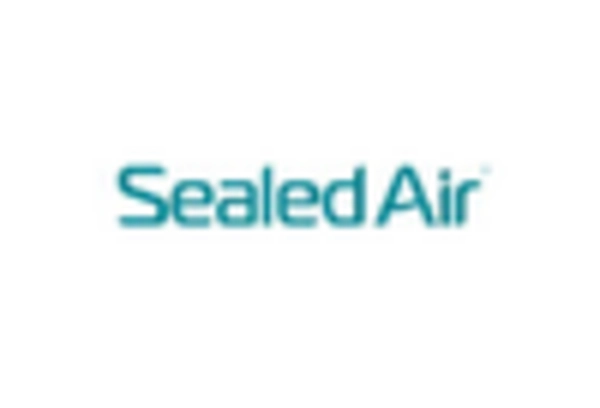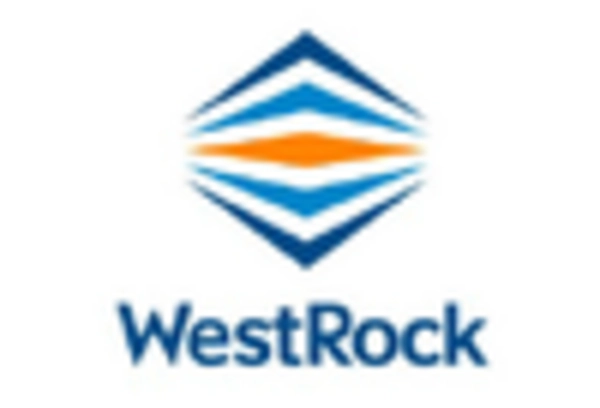Evolving Consumer Preferences
The produce packaging market is experiencing a shift driven by evolving consumer preferences. Increasingly, consumers in the US are prioritizing fresh, organic, and locally sourced produce, which necessitates packaging that preserves quality and extends shelf life. This trend is reflected in the growing demand for innovative packaging solutions that enhance product visibility and appeal. According to recent data, the organic produce segment has seen a growth rate of approximately 10% annually, indicating a strong consumer inclination towards healthier options. As a result, packaging manufacturers are compelled to adapt their offerings to meet these changing preferences, thereby influencing the overall dynamics of the produce packaging market.
Technological Innovations in Packaging
Technological innovations are reshaping the landscape of the produce packaging market. Advancements in materials science and packaging technology are enabling the development of smarter packaging solutions that enhance product preservation and safety. Innovations such as modified atmosphere packaging (MAP) and active packaging technologies are gaining traction, as they help extend the shelf life of fresh produce. The integration of smart sensors and tracking technologies is also becoming more prevalent, allowing for real-time monitoring of product conditions during storage and transport. These technological advancements are likely to drive efficiency and reduce waste in the produce packaging market, ultimately benefiting both producers and consumers.
Sustainability Initiatives by Retailers
Sustainability initiatives undertaken by retailers are increasingly influencing the produce packaging market. Many grocery chains and supermarkets are committing to reducing plastic waste and enhancing their sustainability profiles. This commitment often translates into a demand for eco-friendly packaging solutions that align with corporate social responsibility goals. Retailers are actively seeking packaging that is recyclable, biodegradable, or made from renewable resources. As a result, the market is witnessing a surge in the development of sustainable packaging options, which could account for a substantial share of the overall packaging market. This trend not only addresses environmental concerns but also appeals to a growing segment of environmentally conscious consumers.
Regulatory Compliance and Safety Standards
Regulatory compliance plays a crucial role in shaping the produce packaging market. In the US, stringent regulations regarding food safety and packaging materials are in place to ensure consumer protection. The Food and Drug Administration (FDA) and the United States Department of Agriculture (USDA) enforce guidelines that packaging must adhere to, particularly concerning materials that come into direct contact with food. This regulatory landscape compels manufacturers to invest in compliant packaging solutions, which can increase production costs but also enhance consumer trust. As the market evolves, adherence to these regulations is likely to remain a significant driver, influencing the types of materials and technologies utilized in the produce packaging market.
Rise of E-commerce and Home Delivery Services
The rise of e-commerce and home delivery services is significantly impacting the produce packaging market. With more consumers opting for online grocery shopping, the demand for packaging that can withstand transportation and maintain product integrity has surged. Packaging solutions must now cater to the challenges of shipping fresh produce, which includes preventing spoilage and damage during transit. Data indicates that the online grocery market in the US is projected to reach $100 billion by 2025, highlighting the need for robust packaging solutions. This shift not only drives innovation in packaging materials but also influences the design and functionality of packaging in the produce packaging market.

















Leave a Comment